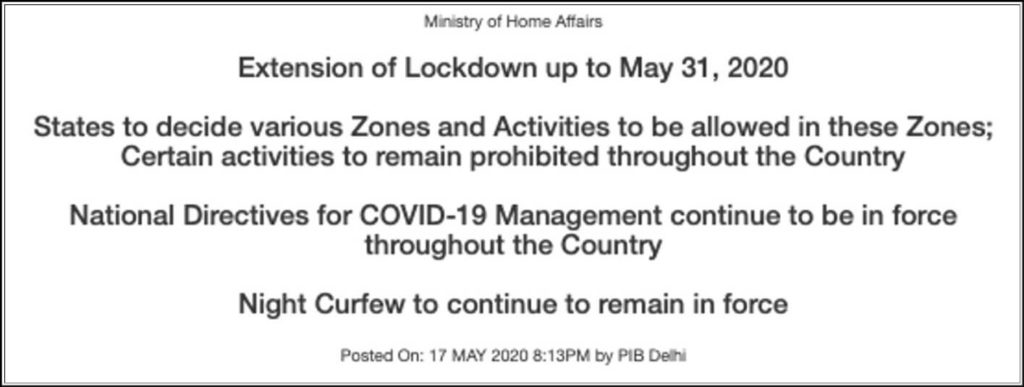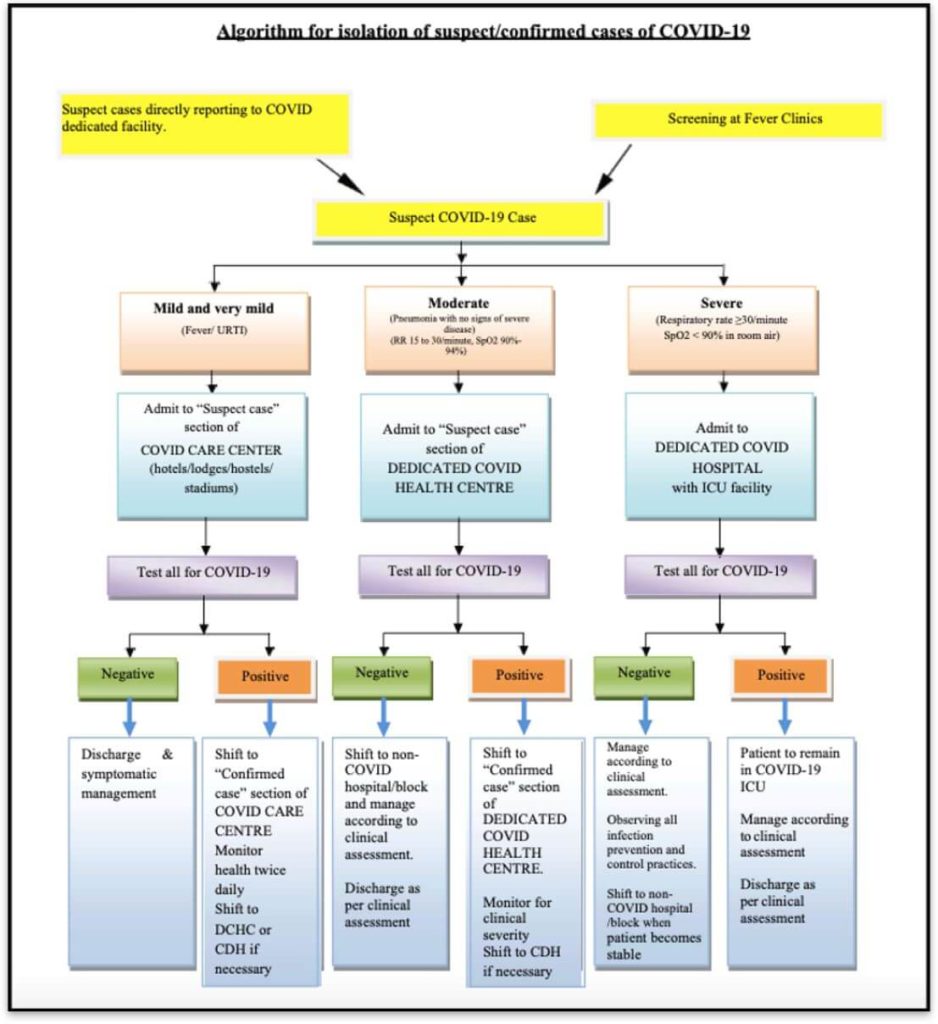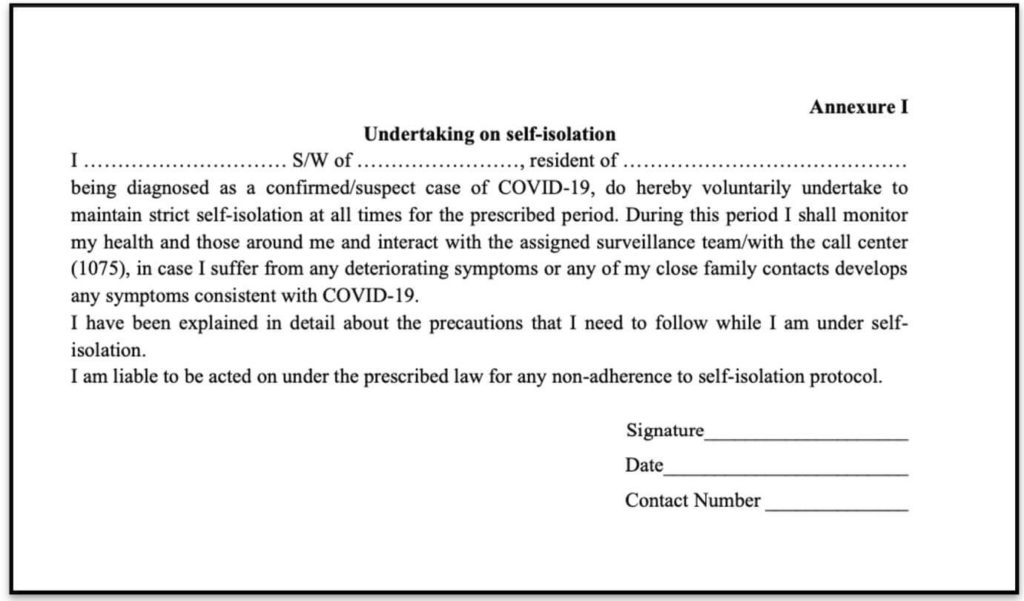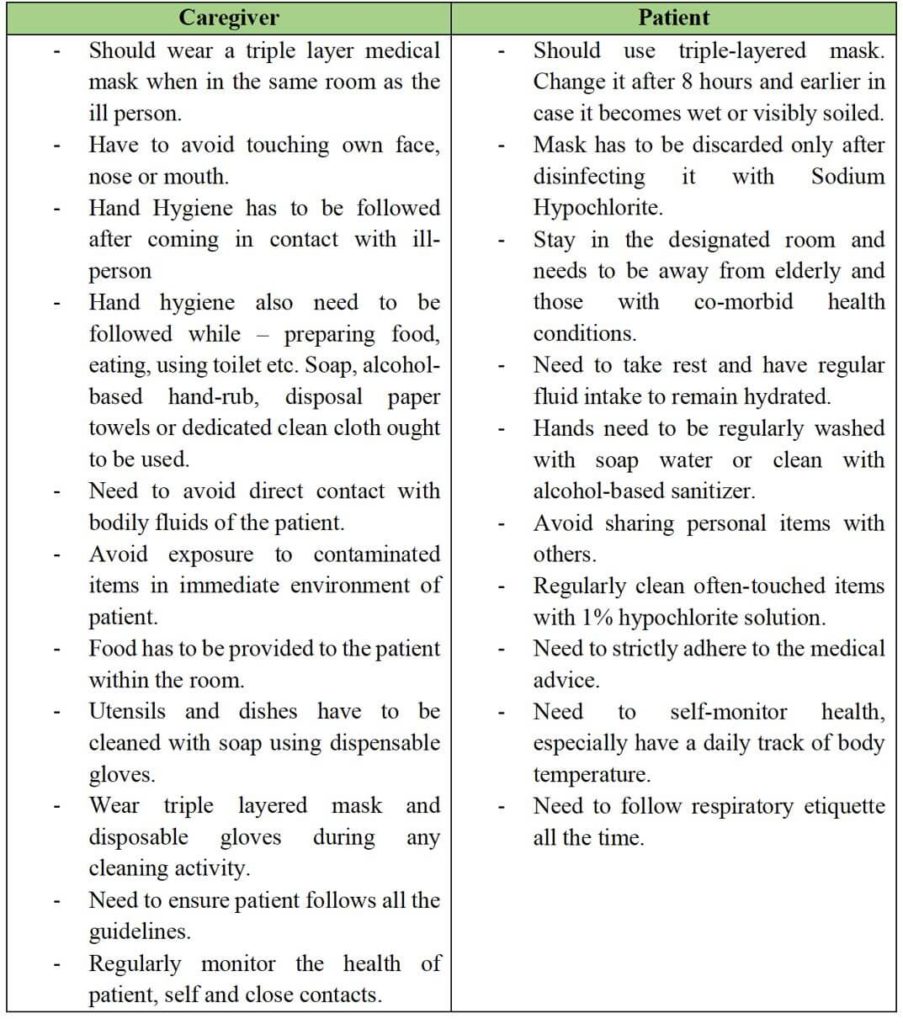Many countries have issued guidelines for home isolation of asymptomatic and mildly symptomatic patients including India. What do these guidelines say? What precautions have to be taken by people opting for home isolation. Here is an explainer.
Practicing social distancing and taking quarantine measures are considered to be effective ways of mitigating the spread of COVID-19, which as on 19 May 2020 has infected more than 48 lakh people worldwide.
India has recently crossed 1 lakh COVID-19 positive cases. The nation-wide lockdown which was initially announced effective from 24 March 2020, was extended further to 31 May 2020, with relaxations in a lot of sectors.

During the last two months, the Government of India (GoI) has released various guidelines pertaining to different aspects of handling the COVID-19 pandemic. Few of these key guidelines relate to quarantine of the suspected and infected people, to ensure that the virus is not spread further.
Patients categorized as per the severity of COVID-19 infection
Ministry of Health and Family Welfare (MOHFW) has issued a set of guidelines on 07 April 2020, titled ‘appropriate management of suspect/confirmed cases of COVID-19’. The purpose of this document was to lay down the procedures to be followed in managing both the suspect as well as the confirmed cases of COVID-19.
A key element of this is assessment of the patients and identify the severity of COVID-19 infection in them, to be able to distinguish the patients and provide suitable treatment. This is also to ensure effective management of the available resources like ventilators etc. As per these guidelines, it was advised to categories the patients into three groups.

Patients with fever and/or upper respiratory tract illness (Influenza) are categorized clinically as mild/very mild. Tests are conducted for determining COVID-19 infection and necessary action taken accordingly. The cases with Pneumonia with no signs of any severe disease are categorized as Moderate. Those patients who have a severe case of Pneumonia or ARDS or septic shock are clinically categorized as Severe.
In order to treat these different categories of patients separately, MOHFW directed states to have 3 different types of COVID-19 Facilities.

- COVID Care Centres (CCC) are make-shift facilities that offer care for only those cases which are clinically assigned as ‘Mild or Very Mild’. They can admit both confirmed as well as suspect cases (with separate designated areas). It needs to be equipped with a Basic Life Support Ambulance (BLSA)
- Dedicated COVID Health Centres (DCHC) offer care for those cases that are designated as ‘Moderate’. They are either a complete hospital or a separate block in a hospital. They need to have assured Oxygen support as well as BLSA.
- Dedicated COVID Hospitals (DCH) offer comprehensive services to the cases that are clinically categorized as ‘Severe’. These need to be fully equipped with ICUs, Ventilators and beds with assured oxygen support.

Mild/pre-symptomatic patients can now opt for Home Isolation
As per the aforementioned guidelines, the cases which are diagnosed as clinically mild/very mild, are required to be admitted and undergo the necessary treatment in COVID Care Centres.
A major share of the COVID-19 cases reported are under mild/very mild category i.e. majority of the infected patients are handled by COVID Care Centres. If the suspect cases who have not yet been conformed as positive cases are also admitted to CCC, it adds to the already existing burden on these centers.
In order to reduce the pressure on these centres and help channelize the available resources to treat those who are in greater need, the government has provided the option of ‘Home Isolation’ where in positive cases with mild/very mild symptoms or are in pre-symptomatic stage can opt for self-isolation from the confines of their homes.
Accordingly, MOHFW has issued guidelines for Home Isolation for mild/pre-symptomatic COVID-19 cases on 24 April 2020. Later, revised guidelines were released by the ministry on 10May 2020.

The guidelines for Home isolation lay down the eligibility criteria for Home Isolation along with the instructions for both the patients and caregivers.

The patient needs to sign an undertaking on self-isolation as per the given guidelines.

Regular monitoring of the health is compulsory, and the patient/caregiver is required to seek urgent attention of medical help in case of the following symptoms:

The patient can end home isolation in the following cases.
- After 17 days of the onset of symptoms for diagnosed patients and from 17 days of date of sampling (pre-symptomatic cases)
- No fever for 10 days
The patients are not required to be tested after home-isolation period as per the revised discharge policy.
Instructions by MOHFW have to be followed by the patient and the caregiver
The guidelines also provide detailed instructions that need to be followed by the patient as well as the care giver during the period of home isolation.

Varied guidelines for home isolation in different countries
COVID-19 is declared to be a global pandemic, and the approach in dealing with the same is different for each of the countries. This ranges from recognizing the need for government intervention to imposing varied degrees of lockdown measures. The World Health Organization has released guidelines regarding providing homecare to patients with mild symptoms of COVID-19.
Some of key aspects of these guidelines include:
- Isolation: Placing the patient in a well-ventilated room and restrict the movement. Household members need to stay in a different room.
- Caregiver: A single caregiver needs to be assigned. Keep it to minimum in case of more care givers needed and avoid any visitors.
- Hand hygiene: It is of utmost importance and needs to be followed when the patient or caregiver comes in contact with anything and during doing the chores like cooking, cleaning etc.
- Mask: A medical mask should be worn. Those who cannot tolerate a mask need to follow rigorous respiratory hygiene. Caregivers also need to wear the mask. The masks cannot be reused.
- Contact: The caregiver needs to avoid contact with any body fluids of the patient. Use disposable gloves and masks.
- Disinfection: Regularly disinfect the room, utensils, linen and other items which come in contact or are in the presence of the patient.
Similar to India, even other countries have developed their own set of rules and guidelines about home-isolation in addition to the guidelines provided by WHO.
Here is a Snapshot few of the home-isolation strategies and guidelines followed by different countries.
United States of America (USA)
Different approaches are being followed by different states in the USA in dealing with COVID-19. A standard national policy/guideline regarding home isolation has not been issued. However, here are few lines of advice by Centre for Disease Control and Prevention (CDC) regarding the process to be followed when one is sick due to COVID-19:
- Stay home and not visit public places except for medical facilities
- Remain hydrated
- Stay in a sperate room and use separate facilities
- Identify a buddy within the premises who would check on you and ensure that you get the required care
- Do not share utensils, dishes, clothes etc. All the non-disposable items need to be handled with gloves
- Wear a mask or cloth covering nose and mouth. Use disposable tissues for sneezes and coughs
- Regularly clean hands with sanitizers and clean high-touch points spaces
- Regularly monitor the symptoms – fever, cough, shortness of breath etc. Call 911 or local emergency number in case symptoms escalate
- Home isolation can be discontinued by taking a test or in case there is no fever/symptoms continuously for 72 hours
South Korea has followed an aggressive approach in dealing with COVID-19 cases. Any patient who has been confirmed positive for COVID-19 is required to be isolated in government provided shelters or home. All those whom the infected patients have come in contact are reached out through social tracing and tested. High risk and moderate severity patients are required to be in the government shelters for treatment.
However, the cases with mild severity are provided option of self-isolation.
- Self-isolation needs to be for two weeks
- Infected patients opting for self-isolation need to be able to measure their own temperatures
- Close family members of the such a patient need to be free of any chronic diseases
- Local monitoring teams to call the self-quarantine patients twice a day to ensure they are in the designated space and to follow up on the symptoms
- Self-quarantined patient are required to download an App, that alerts the officials of any movement beyond the limits . Violators to be fined up to nearly $ 2,500
- Electronic wrist bands being used to keep track of violators
New Zealand is being recognized as one of the countries that has efficiently managed COVID-19 pandemic. The government has regularly issued guidelines about the rules and steps to be followed during quarantine and during lock down. Below are the guidelines issued for patients who are unwell due to COVID-19 and are in home isolation.
- Limit contact with others. Those who live with the patient need to stay in the home and not venture out
- Should not be sharing the bed and any common area
- Minimize the time being spent in any shared space like bathroom, kitchens etc.
- Regularly clean all shared spaces
- Should not share contact personal items like – towels, bed linen, toothbrushes etc.
- Infected or suspected patients need to do their own laundry. Avoid a public launderette and wait for the isolation to be over
- An online complaint can be filed in case any breach of self-isolation
Featured Image: Home Isolation guidelines


